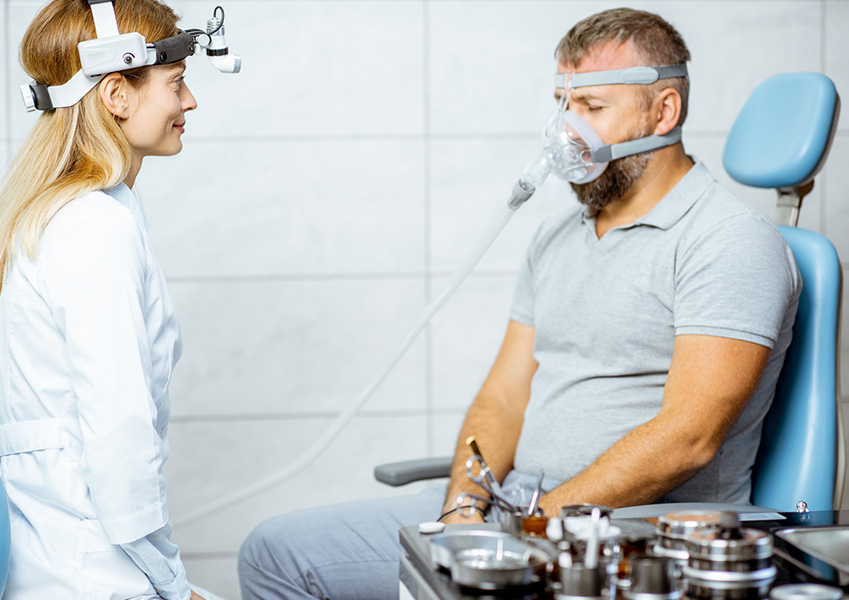It’s Crucial to Learn How Your CPAP Pressure Settings Work
Last Updated on March 7, 2022
As a sleep apnea patient, you might occasionally wonder, how can you determine the right CPAP pressure settings? It’s simple. Note that what determines your CPAP pressure settings is referred to as overnight titration. Titration refers to the process used to find the optimum pressure that works specifically for a patient.
In this study, a sleep specialist is expected to observe your breathing pattern closely. While you sleep, he’ll adjust the settings upwards. He usually does this remotely (preferably in a different room) to avoid disturbance.
In some cases, the patients may be dispatched home with a CPAP machine, which is self-adjusting. This is referred to as APAP or Auto CPAP. With such a device, the prescription used gives allowance for a specific range of pressures. Generally, it starts at lower pressure before adjusting upwards as necessary. It does this in response to the measured airway resistance.
Have a Professional Optimize the Settings

Also, note that these required pressure settings don’t correlate directly with the severity levels of the OSA (obstructive sleep apnea). Moreover, it has been observed that some patients who show mild OSA usually need high-pressure settings. Other patients (with signs of severe OSA) do well under relatively modest pressures.
If your sleep apnea gets worse, the CPAP pressure settings should be optimized accordingly. Ideally, this should be done while you lie on your back. This will get rid of apnea and snoring. To maintain this, your airways should be open at the present CPAP pressure settings.
What Factors Control Your Ideal CPAP Pressure Settings? Here are Some
The following factors are known to affect the ideal CPAP machine settings:
- Airway Obstruction Nature
Usually, the OSA might occur as a result of a blocked nose or a collapsing soft palate. This can happen due to allergies, a tongue that falls back and obstructs the airway, or a deviated septum. All such factors differ with regard to the amount of pressure needed to push the obstructions out of the way.
- Medication and Alcohol
Alcohol and some medications (for example, benzodiazepines) usually work to relax your airway muscles. This can, however, affect your CPAP machine setting requirements.
- Sleeping on your back
Sleeping on the back can worsen your OSA and affect your machine setting needs.
- The Upper Airway Anatomy
This is one significant factor that controls your required CPAP pressure settings. It’s, however, possible that other reasons are causing the obstruction. This may include allergies.
- Obesity (Being Overweight)
Being obese or overweight is definitely a relevant factor. This is proved by the fact that an adjustment in the CPAP machine settings is usually required for those who lose approximately 10 percent of body weight. In such cases, the settings are turned down.
How You’ll Know if Your CPAP Pressure Requires Adjusting
At first, you can gradually ease into your CPAP therapy even though it initially feels slightly uncomfortable. Note that, while using your CPAP machine, a higher airflow setting is usually uncomfortable.
Also, you may sense that the machine pressure is too low. Hence, the snoring could be going on as usual, while the OSA treatment is still on. All these are a clear indication that you should see a doctor or other medical professional in order to have the pressure titrated (this may be up or down).
Here’s the Red Flag to Indicate Your CPAP Pressure is Too Low

If you can inhale as usual but still feels some trouble while exhaling, this is a sign your CPAP machine pressure is becoming too low. On the other hand, if your airway collapses, it’s a sign the CPAP pressure is set a bit lower than it should.
Note that the situation is this way because patients usually feel suffocated whenever the CPAP is set at low pressure. In such a case, instead of relying on the CPAP machine, the patient typically tries to gasp for some air through the nose.
How Would You Know if Your CPAP Pressure is Set too High?
It’s easy to discover if your CPAP pressure is set too high. You may find that your ear is leaking some fluid. Moreover, if you have difficulty exhaling, it indicates the CPAP pressure is set too high.
It’s essential to know the right settings for your CPAP pressure. If your CPAP pressure is too high, what can be the side-effects? If the CPAP pressure is high, you could find yourself struggling with your device. Moreover, you may have nasal congestion and suffer from choppy or fragmented sleep as well.
Should You Try to Adjust the CPAP Pressure Yourself?
No, you should never try to adjust the CPAP machine pressure. To do this, you must go through the nitration process. Through this, you can determine the perfect pressure setting that works best.
What should you do then? In case you’re having trouble with your current CPAP machine setting, seek your physician’s help. Do so without delay. The physician will help you reach a suitable level of pressure.
Note that if the machine settings are not right, you can’t use it. It would be risky to do this since your health will be jeopardized.
Final Thoughts
Those who have sleep apnea must understand the importance of having the right CPAP pressure settings.
Never try changing your CPAP machine pressure settings yourseft. If you have any problem with this, consult your physician without delay. You’ll get help.
Table of Contents
